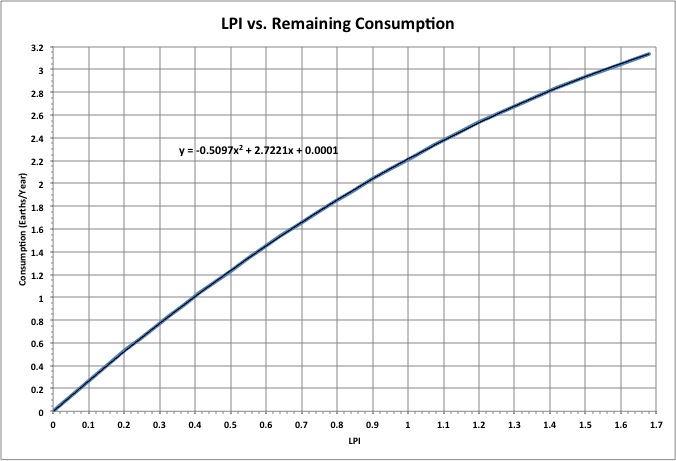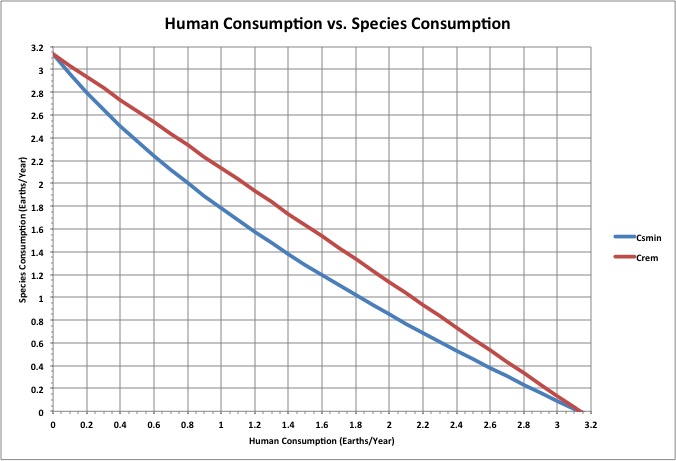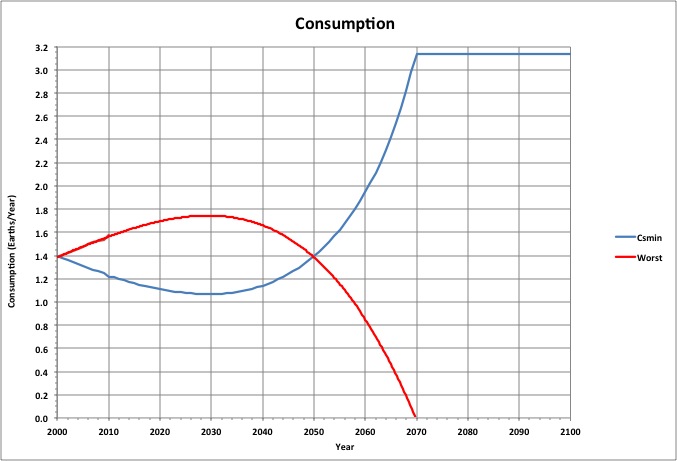
Other species consume what's left after human consumption. This is related to their population (represented by the Living Planet Index, LPI) as shown.
Roll over the image to see the consumption per unit of LPI, which shows that as LPI decreases, species consumption per LPI (equivalent to per capita consumption) increases.

Species consume a minimum amount of resources to take care of themselves and perform the functions required to keep the planet habitable. The total amount consumed for these purposes is Csmin.
As the amount of available resources (Crem) decreases due to human consumption, the populations decrease, resulting in a proportional decrease in Csmin.
The difference between Crem and Csmin is consumed by species as an additional cost required to obtain the minimum amount.
When Csmin reaches 1 Earth (the amount produced per year), the remaining members of other species cannot support the basic habitability functions and survive. Human consumption is 1.82 Earths at this point.
As Csmin drops further, it's all they can do to support themselves, even as decreasing availability of resources continues to diminish their numbers.

As Csmin approaches 1, human consumption begins to peak (represented by the Worst curve fit to historical data). Only if human consumption falls will Csmin recover.
Note that as of the end of 2010, we were consuming an estimated 1.58 Earths.